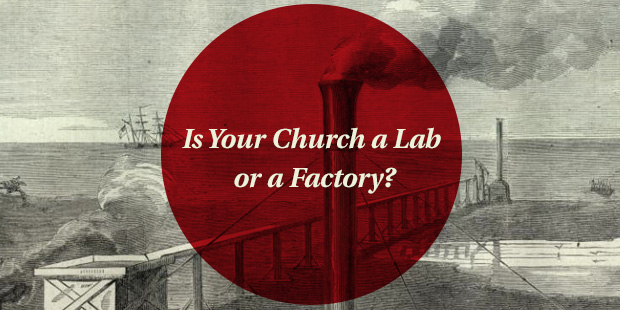
Communicate with Intentionality: Remarkablize Your Message
“Scrambling to keep up and looking for ways to get their message heard, churches are creating more videos, designing more logos, printing more inserts, sending more emails, launching new apps and websites, posting more social media updates, and trying to write lots of captivating content.”
“Here’s what happens. The people they are trying to reach move further away just to survive the onslaught.”
The above paragraphs resonate from the introductory pages of Kem Meyer’s book “Less Chaos. Less Noise.” These words become a powerful reminder that today’s church faces a culture in which the difficulty of connecting with people has become an ever-changing proposition.
Every day, your church stewards thousands of moments of truth. Every time a member talks to a neighbor, someone drives by the church facility, a ministry e-mail goes out, a pastor’s business card is left on a desk, some interaction on behalf of the church has transpired. Every time these events happen, the church’s vision glows brighter or dims in the tiniest little increments.
The visionary leader cares too much about the message to let it just blow in the wind, unattended. Church leaders must be bold and relevant as they integrate vision into the all aspects of church communication. This can happen only with a tremendous amount of intentionality in the complex discipline of church communications.
THE QUICK SUMMARY – The Big Moo by Seth Godin
Most organizations are stuck in a rut. On one hand, they understand all the good things that will come with growth. On the other, they’re petrified that growth means change, and change means risk, and risk means death. Nobody wants to screw up and ruin a good thing, so most companies (and individuals) just keep trying to be perfect at the things they’ve always done.
In 2003, Seth Godin’s Purple Cow challenged organizations to become remarkable—to drive growth by standing out in a world full of brown cows.
But how do you create a big moo—an insight so astounding that people can’t help but remark on it, like overnight shipping (FedEx) or the world’s best vacuum cleaner (Dyson)? Godin worked with thirty-two of the world’s smartest thinkers to answer this critical question. And the team—with the likes of Tom Peters, Malcolm Gladwell, Guy Kawasaki, Mark Cuban, Robyn Waters, Dave Balter, Red Maxwell, and Randall Rothenberg on board—created an incredibly useful book that’s fun to read and perfect for groups to share, discuss, and apply.
The Big Moo is a simple book that, instead of lecturing you, tells stories that stick to your ribs and light your fire. It will help you to create a culture that consistently delivers remarkable innovations.
A SIMPLE SOLUTION
Few authors have had the kind of lasting impact and global reach that Seth Godin has had. In a series of now-classic books that have been translated into 36 languages and reached millions of readers around the world, he has taught generations of readers how to be remarkable.
In Purple Cow, first published in 2003 and revised and expanded in 2009, Godin launched a movement to make truly remarkable products that are worth marketing in the first place. Through stories about companies like Starbucks, JetBlue, Krispy Kreme, and Apple, coupled with his signature provocative style, he inspired readers to rethink what their marketing is really saying about their product.
But as it turns out, being remarkable was just the starting point.
Remarkable isn’t up to you. Remarkable is in the eye of the customer. If your customer decides something you do is worth remarking on, then, by definition, it’s remarkable.
Every once in a while, though, a product or service is so remarkable that it changes the game. Your innovation becomes something even bigger than a purple cow.
A big moo is the extreme purple cow, the remarkable innovation that completely changes the game.
A purple cow is what you need, but the big moo goes a step further. In order to grow at the pace the markets demand, you and your colleagues must find the big moo, the insight that is so astounding that people can’t help but remark on it.
You must remarkabalize your organization. Create a culture where the big moo shows up on a regular basis, where “normal” is nothing but the short pause between remarkable innovations. In fact, where normal is gone and where the new normal is a constant stream of industry-busting insights and remarkable innovations that keep your organization growing.
Wanting growth and attaining growth, though, are two different things. Most organizations are paralyzed, stuck in a rut, staring at the growth paradox. On one hand, they understand all the good things that come with growth. On the other, they’re afraid, petrified that growth means change, change means risk, and risk could mean death. Nobody wants to screw up and ruin a good thing, so the organization just sits there, motionless.
There isn’t a logical, proven, step-by-step formula you can follow. Instead, there’s a chaotic path through the woods, a path that include side routes encompassing customer service, unconventional dedication, and unparalleled leadership. Are you ready to embrace the quest for the big moo?
Seth Godin, The Big Moo
A NEXT STEP
Schedule a half-day offsite team meeting that includes a meal together, a fun and different team activity, and time for a two-to-three hour “big moo” idea session.
After the meal and activity, gather the team and write the phrases “guest experience,” “unconventional dedication,” and “unparalleled leadership,” on the top of three separate chart tablets.
Use the following schedule for each of the three categories:
In a thirty-minute blue-sky session, take 15 minutes to list (without discussion) ideas for the phrase. Then, take 10 minutes to review the list, and choose the top three ideas. Finally, take five minutes and choose the top idea by answering this question: “How will this idea/action/event make our organization remarkable?”
After you have completed the above exercise for each of the three phrases, write the resulting three ideas/actions/events on a chart tablet. Take thirty minutes to discuss which of the three should be acted on first, and sketch out a timeline and responsibility chart for it.
After implementing the first one, repeat the process for the other two top ideas/actions/events within the next three months.
At the end of the three-month period where you have implemented all three, bring your team together for an evaluation time to measure how successful the ideas/actions/events were in terms of making your organization remarkable.
Excerpt taken from SUMS Remix 81-3, issued December 2017.
This is part of a weekly series posting excerpts from one of the most innovative content sources in the church world: SUMS Remix book excerpts for church leaders.
SUMS Remix takes a practical problem in the church and looks at it with three solutions; each solution is taken from a different book. Additionally, a practical action step is included with each solution.
As a church leader you get to scan relevant books based on practical tools and solutions to real ministry problems, not just by the cover of the book. Each post will have the edition number which shows the year and what number it is in the overall sequence. (SUMS Remix provides 26 issues per year, delivered every other week to your inbox).
> > Subscribe to SUMS Remix <<

Tags: Communication, Remarkabilize, SUMS Remix, Seth Godin, The Big Moo



























